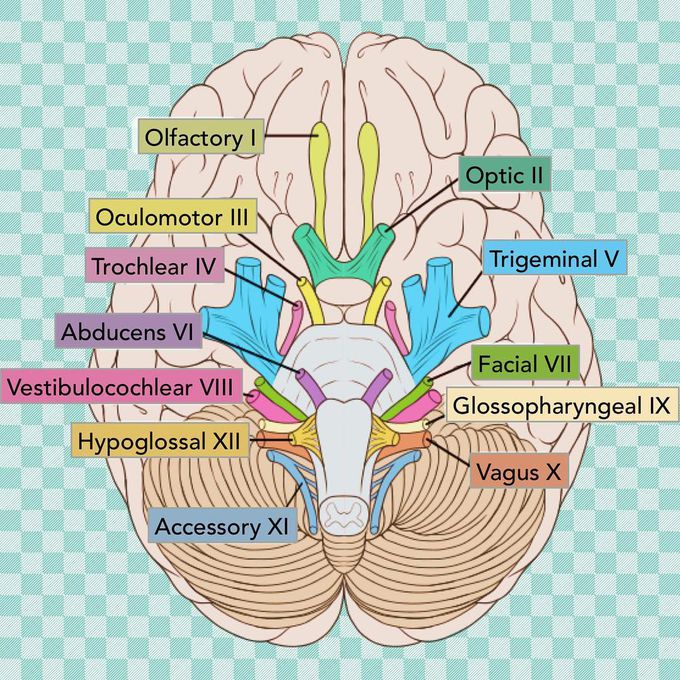


Nerve
Cranial nerves are the nerves that emerge directly from the brain (including the brainstem), in contrast to spinal nerves (which emerge from segments of the spinal cord). Cranial nerves are generally named according to their structure or function. Smell (I) The olfactory nerve (I) conveys the sense of smell. Vision (II) The optic nerve (II) transmits visual information. Eye movement (III, IV, VI) The oculomotor nerve (III), trochlear nerve (IV) and abducens nerve (VI) coordinate eye movement. Trigeminal nerve (V) The trigeminal nerve (V) comprises three distinct parts: The Ophthalmic (V1), the Maxillary (V2), and the Mandibular (V3) nerves. Combined, these nerves provide sensation to the skin of the face and also controls the muscles of mastication (chewing). Facial expression (VII) Lesions of the facial nerve (VII) may manifest as facial palsy. This is where a person is unable to move the muscles on one or both sides of their face. A very common and generally temporary facial palsy is known as Bell's palsy. Hearing and balance (VIII) The vestibulocochlear nerve (VIII) splits into the vestibular and cochlear nerve. The vestibular part is responsible for innervating the vestibules and semicircular canal of the inner ear; this structure transmits information about balance, and is an important component of the vestibuloocular reflex, which keeps the head stable and allows the eyes to track moving objects. Oral sensation, taste, and salivation (IX) The glossopharyngeal nerve (IX) innervates the stylopharyngeus muscle and provides sensory innervation to the oropharynx and back of the tongue. Vagus nerve (X) Loss of function of the vagus nerve (X) will lead to a loss of parasympathetic innervation to a very large number of structures. Shoulder elevation and head-turning (XI) Damage to the accessory nerve (XI) will lead to ipsilateral weakness in the trapezius muscle. Tongue movement (XII) The hypoglossal nerve (XII) is unique in that it is innervated from both the motor cortex of both hemispheres of the brain.

